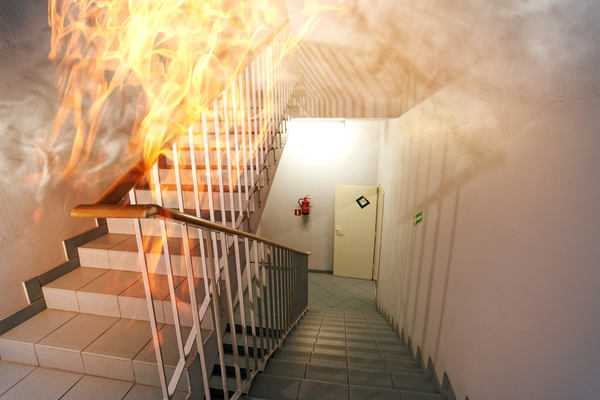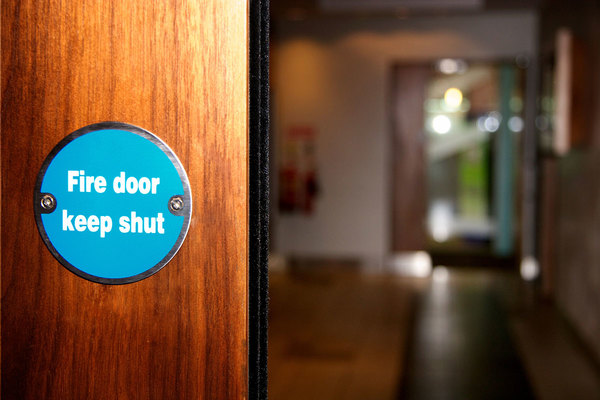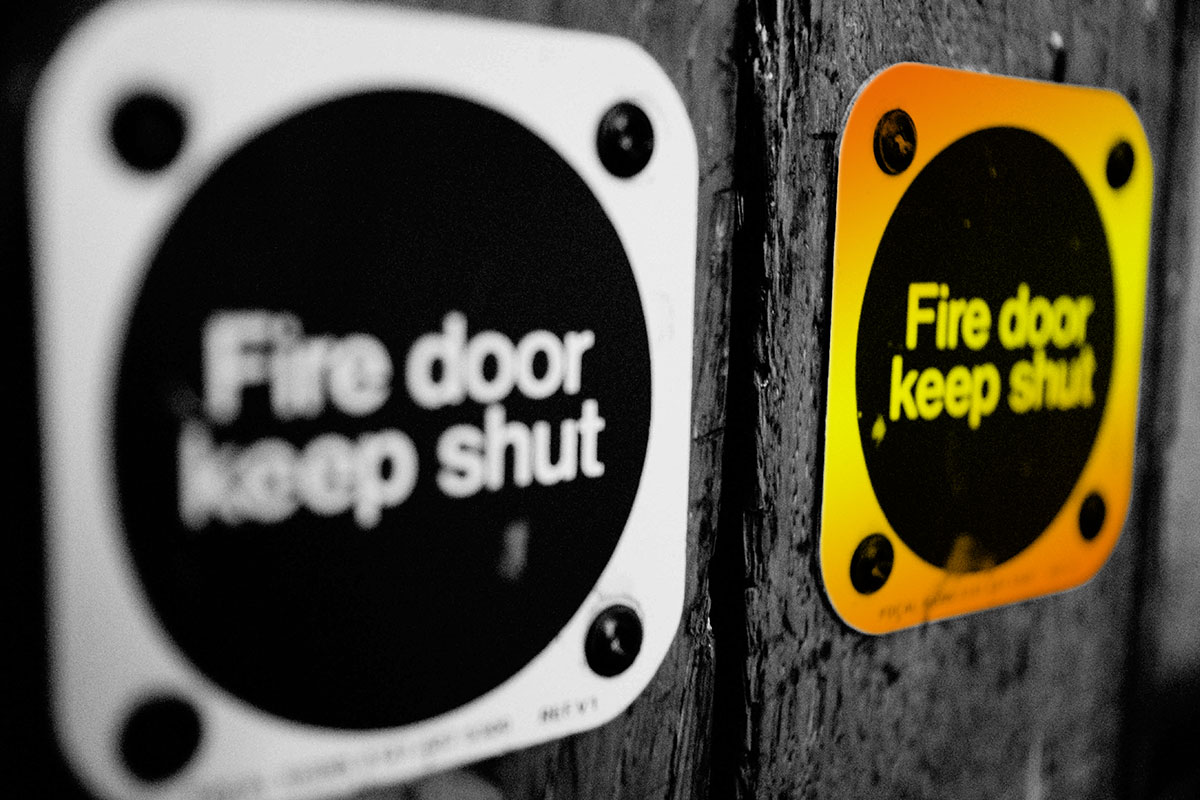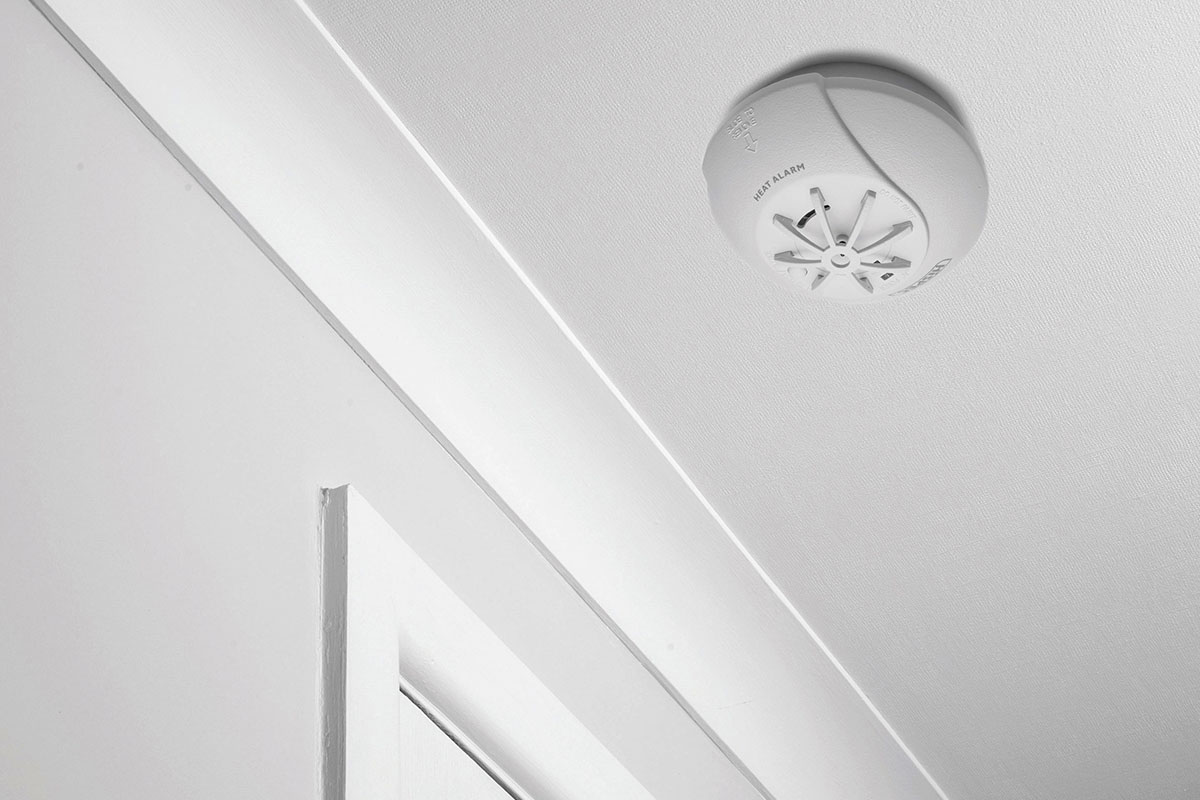You are viewing 1 of your 1 free articles
Government reveals issues with fire doors from defunct manufacturer
The government has revealed there are issues with fire doors manufactured by a now defunct company which supplied doors to Grenfell Tower.
In a statement to parliament today, housing secretary James Brokenshire said following tests of a fire door that was used in Grenfell Tower, and found to only resist fire for half of the required time, the government’s expert panel had concluded there is a “performance issue” with the fire doors manufactured by Manse Masterdor, which ceased trading in 2014.
In March, the Metropolitan Police said that a fire door from an undamaged flat in Grenfell Tower resisted flame for only 15 minutes when tested. It should have provided 30 minutes of resistance.
Sajid Javid, former housing secretary, told parliament there is “no evidence that this is a systemic issue”.
Mr Brokenshire said: “These doors were manufactured by the company in such a way that the glazing and hardware components fitted would not consistently meet the 30 minutes of fire resistance in furnace tests required for these doors to meet the current building regulations guidance.”
The National Fire Chiefs Council has advised that buildings with this brand of fire door need to review their fire risk assessments and provide them with details of where the doors have been installed. This assessment should also consider how quickly these doors should be
replaced.
Mr Brokenshire also said the government will be testing fire doors from other manufacturers.
The note from the government’s independent expert panel states all fire doors should be “routinely checked” by a qualified professional.
An Inside Housing investigation in July revealed that 61% of tower blocks have at least some fire doors which were either broken or did not provide the required 30 minutes resistance to fire.
Flat entrance fire doors should have “test evidence demonstrating they meet the performance requirement in building regulations guidance”.
This evidence should be “carefully checked” to ensure it matches the same specifications of the doors being installed.
Flat front doors that allow access directly into a home from a shared corridor need to resist fire for 30 minutes minimum, with additional requirements for stopping smoke leaking through, the advice note said.
Flat front doors should be replaced if landlords suspect they do not provide 30 minutes’ resistance to fire.
The expert panel said residents should be made aware of the importance of working self-closers on all fire doors. It said a UKAS-accredited body can give landlords and building owners “greater assurance on the performance of the doors”.
Update: at 5.10pm, 16.05.18 This story has been updated to include further details from the NFCC
Never Again campaign
In the days following the Grenfell Tower fire on 14 June 2017, Inside Housing launched the Never Again campaign to call for immediate action to implement the learning from the Lakanal House fire, and a commitment to act – without delay – on learning from the Grenfell Tower tragedy as it becomes available.
One year on, we have extended the campaign asks in the light of information that has emerged since.
Here are our updated asks:
GOVERNMENT
- Act on the recommendations from Dame Judith Hackitt’s review of building regulations to tower blocks of 18m and higher. Commit to producing a timetable for implementation by autumn 2018, setting out how recommendations that don’t require legislative change can be taken forward without delay
- Follow through on commitments to fully ban combustible materials on high-rise buildings
- Unequivocally ban desktop studies
- Review recommendations and advice given to ministers after the Lakanal House fire and implement necessary changes
- Publish details of all tower blocks with dangerous cladding, insulation and/or external panels and commit to a timeline for remedial works. Provide necessary guidance to landlords to ensure that removal work can begin on all affected private and social residential blocks by the end of 2018. Complete quarterly follow-up checks to ensure that remedial work is completed to the required standard. Checks should not cease until all work is completed.
- Stand by the prime minister’s commitment to fully fund the removal of dangerous cladding
- Fund the retrofitting of sprinkler systems in all tower blocks across the UK (except where there are specific structural reasons not to do so)
- Explore options for requiring remedial works on affected private sector residential tower blocks
LOCAL GOVERNMENT
- Take immediate action to identify privately owned residential tower blocks so that cladding and external panels can be checked
LANDLORDS
- Publish details of the combinations of insulations and cladding materials for all high rise blocks
- Commit to ensuring that removal work begins on all blocks with dangerous materials by the end of 2018 upon receipt of guidance from government
- Publish current fire risk assessments for all high rise blocks (the Information Commissioner has required councils to publish and recommended that housing associations should do the same). Work with peers to share learning from assessments and improve and clarify the risk assessment model.
- Commit to renewing assessments annually and after major repair or cladding work is carried out. Ensure assessments consider the external features of blocks. Always use an appropriate, qualified expert to conduct assessments.
- Review and update evacuation policies and ‘stay put’ advice in the light of risk assessments, and communicate clearly to residents
- Adopt Dame Judith Hackitt’s recommended approach for listening to and addressing tenants’ concerns, with immediate effect
CURRENT SIGNATORIES:
- Chartered Institute of Housing
- G15
- National Federation of ALMOs
- National Housing Federation
- Placeshapers












